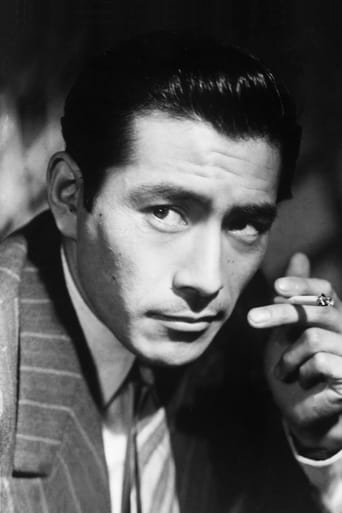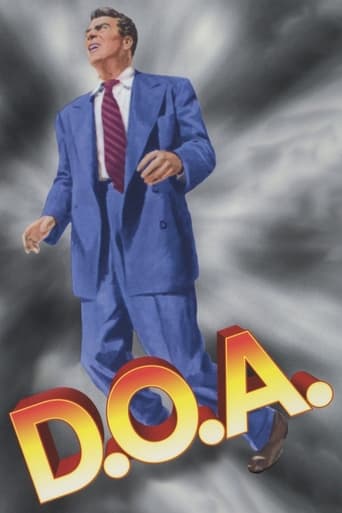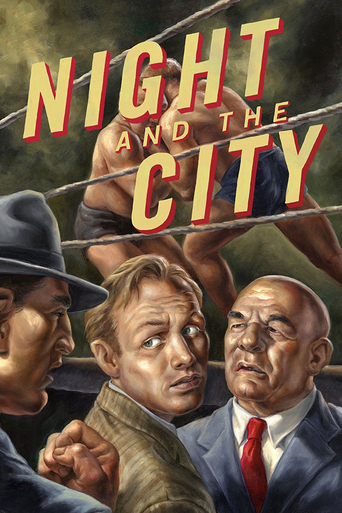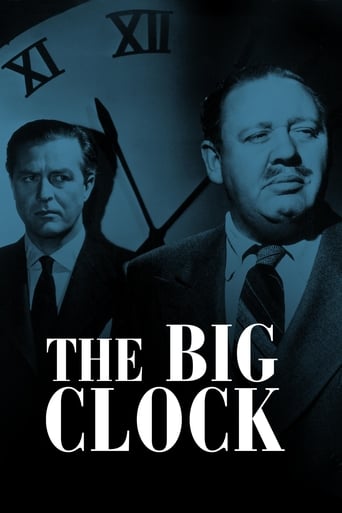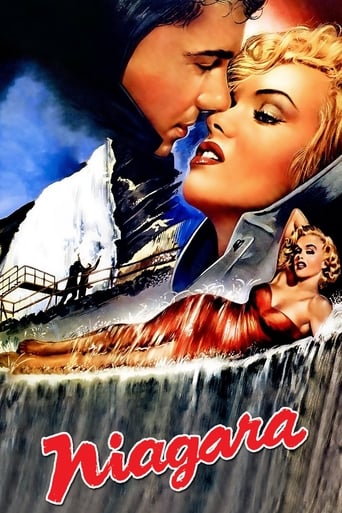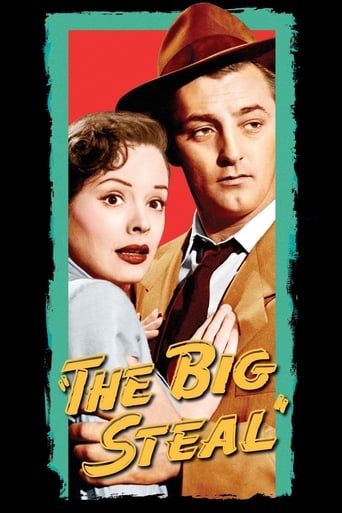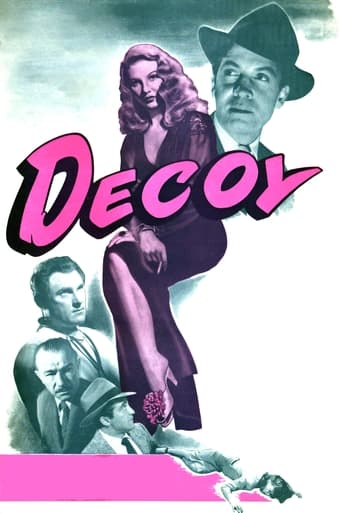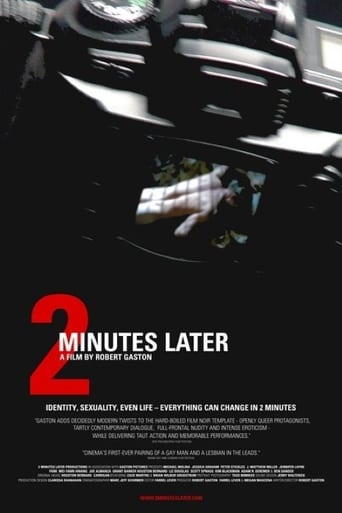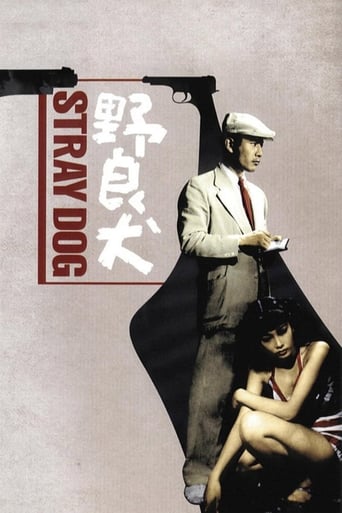
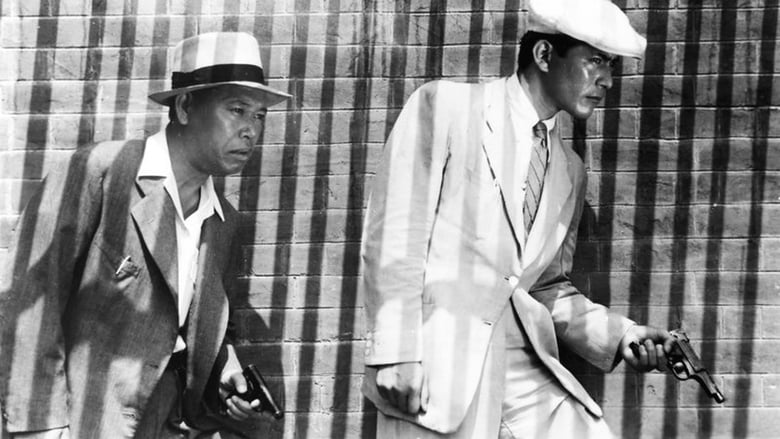
Stray Dog (1949)
A bad day gets worse for young detective Murakami when a pickpocket steals his gun on a hot, crowded bus. Desperate to right the wrong, he goes undercover, scavenging Tokyo’s sweltering streets for the stray dog whose desperation has led him to a life of crime. With each step, cop and criminal’s lives become more intertwined and the investigation becomes an examination of Murakami’s own dark side.
Watch Trailer
Cast


Similar titles
Reviews
I love this movie so much
Absolutely brilliant
it is finally so absorbing because it plays like a lyrical road odyssey that’s also a detective story.
True to its essence, the characters remain on the same line and manage to entertain the viewer, each highlighting their own distinctive qualities or touches.
A film noir or a film with metaphors of dogs and rain? The panting dog in the opening credits is forgotten until the tracking down of the man with the stolen gun. At that point, the senior cop draws upon the metaphor of a mad dog walking straight to its target (visuals of a straight railway track are shown). What Kurosawa and his co-scriptwriter does not explain is how the panting dog, obviously suffering from the oppressive humidity and heat, becomes a "mad" dog. The junior cop also refers to the man he is tracking down as a "mad" dog. Can oppressive humidity contribute to mad criminal actions? When the tracked man is caught, he howls like a dog--not necessarily as a "mad" dog but a sad dog. Rain and rain clouds abound in Kurosawa films (e.g., "Rashomon") and this film is no exception.The script's highlight was the cabaret dancer feeling sorry for her lover because she had expressed a desire for a lovely expensive dress she could never buy. This remark is the catalyst for a crime. She realizes it and wishes she had had the guts to steal money to buy it. She rebukes the economic disparity and finds empathy in the junior cop for her outburst.The next best sequence was a lady criminal, who was not able to shake off a persistent junior cop all day, finally offering him cold beer and food and helping him out with a clue.
I don't think Stray Dog is on the same level as some of Akira Kurasawa's later work like Seven Samurai, Ran, Ikiru, Yoijimbo, Rashomon, Throne of Blood, High and Low and The Hidden Fortress. It is a little too long and sags in the pace in the middle, however despite these debits there is much to admire. Kurasawa's films were always well made and directed, even those not so highly regarded like Dreams and Rhapsody in August, and with the striking scenery and very accomplished cinematography and direction Stray Dog is no exception. The music is appropriately simple yet lively, I am especially fond of the Bengawen Solo, while the script gives a certain tension, the action is authentic and Toshiro Mifune is as ever charismatic in a role that suits his acting skills to a tee. What is special about Stray Dog is the story, in the action you feel the summer heat and Mifune's self-loathing, but emphasis is cleverly put on the goodness of ordinary people and the world's beauty. Overall, early Kurasawa it is, but one that makes its mark without being one of his finest. 8/10 Bethany Cox
Anyone interested in the genre of film noir dare not fail to see this amazing contribution from Japan, positively oozing with postwar angst and dwelling upon the dazed, uncomprehending, and often despairing ex-soldiers who have become 'stray dogs' in society. 'Sometimes a stray dog can become a mad dog,' says the wise detective Sato in this atmospheric drama. The film is written and directed by the greatest of Japanese filmmakers, Akira Kurosawa. He made this film immediately following his very downbeat and depressing medical drama, THE SILENT DUEL (1949). This was the third successive film Kurosawa made with the brilliant actor Toshiro Mifune, with whom he would go on collaborating on films for many years to come. The finest performance in the film is by Takashi Shimura (1905-1982), as Detective Sato. He infuses so much deep character and poignancy into his role, that it is a marvel to watch. He was certainly a very great actor indeed. Mifune, who was later to become a master himself, was at this stage still just a handsome young leading man. In watching this film for the first time, I was struck by the jerky movements of most of the men in the film, especially those of Mifune. This strange body language is apparently meant amongst that strange race to show respect. But it really resembles nothing so much as the sudden, alarming, jerky movements of lizards. Have you ever watched a resting lizard on a wall? It suddenly jerks its head around, suddenly changes its stance, suddenly stands erect, suddenly runs off. That is what formal Japanese men are like in these Kurosawa movies, and it is not an endearing quality. Shimura does none of this, thank God. That is another reason why he seems so much more human, someone a Westerner can comprehend and relate to. The film also features a marvellous performance by Keiko Awaji as Harumi Namaki, the showgirl girlfriend of the 'mad dog' killer, Yusa. Mifune plays a young detective named Murakami, who has just begun his job, hoping it will focus him and purge him of the memories of the War and its immediate aftermath, when he had his pack and all his money stolen as he made his way home. Throughout this film everyone is sweltering in the most horrendous heatwave and they all wipe their brows continuously. There is of course no air conditioning, there are only little hand-held fans. Murakami is nearly fainting with the heat in a crowded bus after work, becomes distracted, and his pocket is picked, and his detective's Colt pistol is stolen. This initiates the complex chain of events which constitute the rambling and tortuous plot of the film, which becomes Murakami's first case, which he shares with the uncle figure, Sato. One of the most amazing scenes in the film is when we see the troupe of girl dancers leave the stage and retreat to a room where they can rest between shows. They all lie down gasping with the heat, like beached fish. It is, I do believe, one of the most remarkable scenes I have ever seen on film, and it is impossible to describe the intensity of the atmosphere and the intimacy of it all sufficiently. This film is extraordinary for daring, dynamic, and imaginative camera work. It is simply dazzling, right from the first scenes. The moving camera as it follows people running is a marvel. So many shots are original, everything about the composition is charged with energy and unique visual power. The film is a true work of genius. Sometimes there are countries fortunate enough to produce a film director of such stature that his images and films come to constitute the way in which one thinks of the country. India had Satyajit Ray, Italy had Luchino Visconti, Argentina had Leopoldo Torre Nilsson, Sweden had Ingmar Bergman, and Japan had Akira Kurosawa. Without such towering giants of the cinema, we would understand so much less of those countries. Cinematic geniuses are often the megaphones through which the voice of a nation is magnified to the world.
In the sweltering heat of post-war Japan, rookie detective Murakami (Toshiro Mifune) loses his Colt automatic after boarding a crowded tram. With the assistance of veteran cop, Detective Sato (Takashi Shimura), Murakami delves into the seamy underworld of black market dealers and desperate criminals in a race against time to recover the weapon.Made before Kurosawa's famed Rashomon, STRAY DOG is a noir-style examination of responsibility and the chain of destruction and harm generated by the material cause of one moments inattention. The film takes obvious visual inspiration from American film noir, though the moral predicament which consumes Murakami can be understood in a distinctively Japanese way; as a thoughtful articulation of simple decency and honour reclaimed."The swords the samurai wore as their prerogative and sign of caste were not mere decorations. They had the right to use them on the common people" The loss of a samurai's sword was the loss of honour, which only its recovery could restore. For Murakami, his aloofness resulting in the theft of his gun is a source of great shame. On first hearing of the Colt's implication in an armed robbery, he offers his superior a letter of resignation. Rather than accept, the chief partners him with the experienced Detective Sato. A sort of master/student dichotomy. The idea of culpability,explored to a greater extent in RASHOMON(1950) is the locus of STRAY DOG. It also provides a moral imperative for the films protagonist.In order to redeem himself, Murakami traverses the ruins of a post-war society. His search leads him through slums and sleazy districts; lowly inhabitants desperate for money explain their rejection of morally coded behaviour. The sense of duty Murakami ascribes to is starkly opposed to this, essentially, that the vicissitudes of life can justify larceny and violence. The trail leads to Yusa (Isao Kimura) whom Murakami shares a great deal in common with though they have chosen to take different paths. Both are veterans of the war and have been victims to theft. Yusa embodies the fall of moral righteousness in the face of persecution and misfortune.As Sato mentions at one point "a mad dog knows only a straight road". The ability of an individual to react with wisdom in the face of a moral dilemma is diminished once one has become accustomed to the temporal fruits of vice and materialistic greed. Yusa steals to buy fine clothes, in essence, purchasing status. STRAY DOG shows the blinding nature of this path to be a a very human predicament. In the film's final sequence where Murakami pursues Yusa, the two lie side by side exasperated from the chase. The irreconcilable dualism of 'good' and 'bad' so fundamental to film noir is eroded when Yusa bursts into tears, conscious of the futility of his path. Defiance is replaced with sincerity, where "nothing is kept in reserve, nothing is expressed under disguise, nothing goes to waste".STRAY DOG is a great example of Kurosawa's attention to questions concerning morality and honour, independent of his famed period films.


